Ancient astronomers bestowed the names of constellations, which bear no resemblance to actual bears but rather to dippers, in ancient times. They perceived the outlines of two bears within these constellations and devised a captivating myth. Kronos, the father of the mighty deity Zeus, became aware of a prophecy that his own son would overthrow him. In order to prevent this prophecy from coming true, he decided to consume his own offspring. However, Gaea, the mother of Zeus, took pity on her son and concealed him in a cavern. There, Zeus was nourished by a goat and two bears. Once Zeus triumphed over Cronus and ascended to the position of supreme god, he sought to express gratitude to his nurturers and elevated them to the heavens. Thus, the constellations of the Big and Little Bears, as well as Capricorn, came into existence.
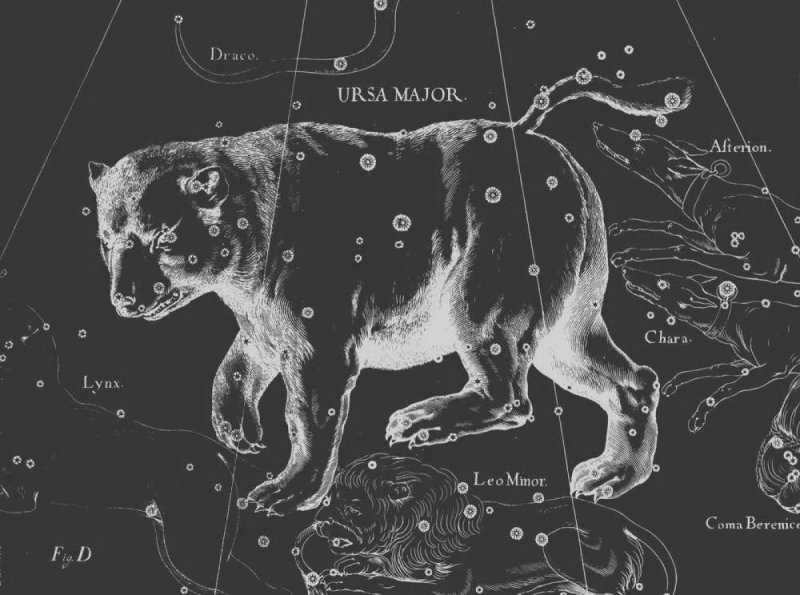

Bears in containers were not only observed by the ancient Greeks, but also by the Indians and some northern tribes // Photo: magicru.ru
According to another myth, the Great Bear is actually Zeus’s lover, Callisto. Hera, Zeus’s jealous wife, decided to kill her rival and transformed her into a bear. When Callisto’s son Arcas saw the wild animal at his doorstep, he tried to kill it. However, Zeus intervened at the last moment and stopped him. The god then took his beloved to the heavens. The Little Bear became the favorite pet of the beautiful nymph. Arcas also found his place in the sky. He was transformed into Bootes and was tasked with ensuring the safety of the bears for all eternity.
It is important to mention that bears in containers were observed by not only the ancient Greeks, but also by the Indians and various northern tribes. According to Indian folklore, a band of hunters ventured out to capture the bear. Their expedition turned out to be fruitful, leading to a successful hunt. As a result, during the autumn season, the leaves on trees turn red, symbolizing the blood of the slain creature dripping from the heavens onto the foliage. Additionally, in this particular constellation, the northern tribes and Indians additionally perceived a hunter and a dog (within the “handle” of the bucket).
Signs of the Zodiac
The Zodiac is a collection of twelve constellations that are positioned along the path of celestial bodies. These constellations, known as the Animal Circle, were given their names by the ancient Greeks, who borrowed them from the Babylonians and added Libra to the mix.
The Greeks believed that Aries was the bull with the coveted golden fleece. Gemini, on the other hand, were known as the brothers who were kidnapped by Paris, leading to the infamous Trojan War. Cancer, an intimidating monster, was ultimately defeated by the mighty Hercules. Interestingly, the ancient Egyptians revered Cancer as a sacred scarab. The lion, once again, played a prominent role in Greek mythology as the Nemean beast, one of Heracles’ incredible feats. The maiden, represented by the constellation Virgo, is either Rhea, the wife of Cronus and mother of the Greek gods, or Astrea, the goddess of justice. However, the ancient Mesopotamians did not perceive Virgo as a woman; they simply referred to it as Borozda. The Greeks, on the other hand, did not recognize the presence of scales in the night sky, but the wise inhabitants of ancient Babylon had already identified this constellation as Judgment.
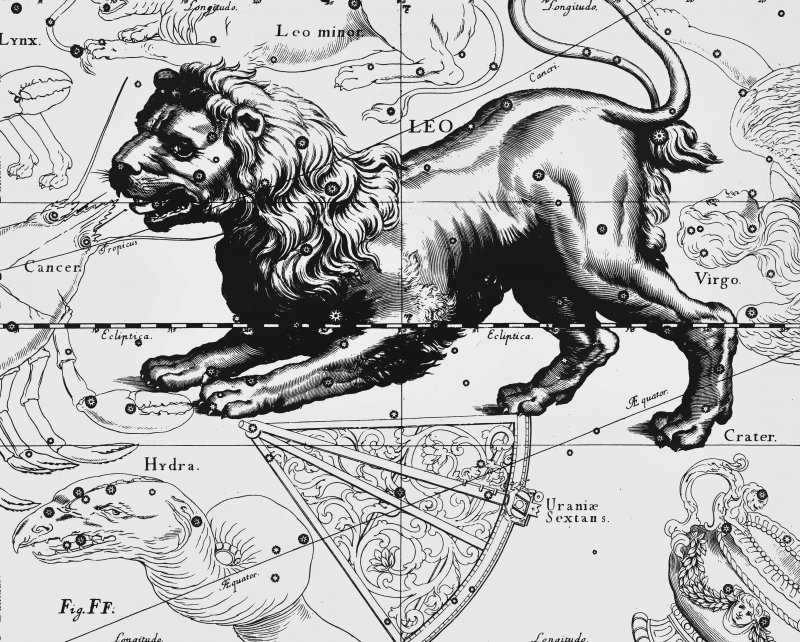
The constellations received their names through various mythological stories. For example, Aquarius is associated with the hero Deucalion, who managed to survive the great Flood. On the other hand, Pisces is linked to the goddess Aphrodite and her son Eros. According to the myth, they transformed into fish and were tied together by their tails to escape from a fearsome monster and stay united.
Scorpion
The Scorpion constellation has been observed and revered by various ancient civilizations including the Greeks, Babylonians, and people of ancient Mesopotamia. They held the Scorpion in high regard, admiring its tail, pincers, sting, and even its navel. According to Greek mythology, the Scorpion was sent by the goddess Hera to kill the hero Orion. Orion, known for his arrogance and boasting, angered the gods with his claim of invincibility. Orion’s counterpart, the constellation Orion, also found its place in the night sky. Interestingly, the constellations of Orion and Scorpius cannot be seen simultaneously, as if Zeus intervened to allow Orion to escape from his pursuer.
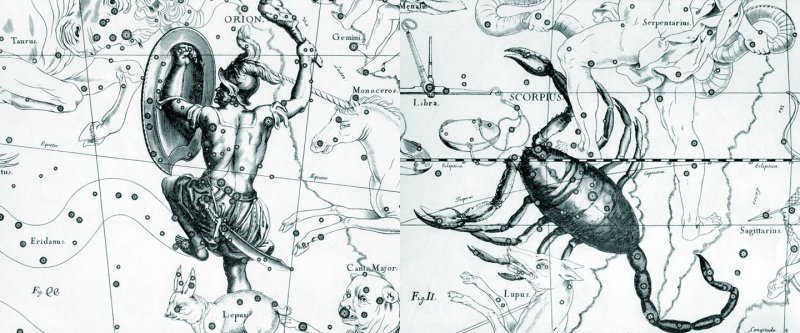
The constellations Orion and Scorpius are not visible simultaneously. Zeus granted an ancient hero the ability to hide from his pursuer // Photo: ria.ru
Explorations and Monarchs
Not all constellations were named by the ancient Greeks. Many received their names during the period of the Great Geographical Discoveries. As a result, constellations like the Southern Triangle, Peacock, Crane, and others emerged. Court astronomers also sought to immortalize their rulers in the stars. A part of the constellation Argo’s Ship was named the Charles Oak, in honor of Charles II. And for the sake of honoring the Prussian ruler Frederick the Great, Andromeda almost lost her arm to become Frederick’s Glory.
Modern astronomers are constantly making new discoveries in the field of stars. However, many of these newly discovered stars are given rather unromantic names, usually consisting of a combination of letters and numbers. On the other hand, there is also an option to purchase the right to name a star after a loved one or idol for a certain fee.
If you’re interested in more fascinating articles from the Russian Destiny online edition, why not save yourself some time and follow us on social media? You can find us on #Vkontakte, #OneClassmates, and #Facebook.
In this article, we will explore the concept of constellations and delve into the origins of their names.
As you are aware, the night sky contains an impressive array of star patterns that have captivated human interest throughout history. The ancient civilizations were deeply curious about this fascinating celestial realm and sought to understand everything beyond their own world. They diligently observed the night sky and in the Neolithic period, they began identifying and naming groups of stars. Over time, some of these star patterns have faded into obscurity, known only to historians of astronomy.
Clusters of stars were previously referred to as constellations

So, approximately 5 millennia ago, individuals began to identify the most radiant celestial bodies in the nocturnal expanse and unite them into clusters. At present, humanity employs advanced technology to analyze these formations, which was previously unattainable. Constellations were arrangements created from brilliant stars. They primarily served as aids for navigation, as well as for determining the seasons, the time of day, making predictions, and fulfilling astrological purposes.
What exactly is a constellation?
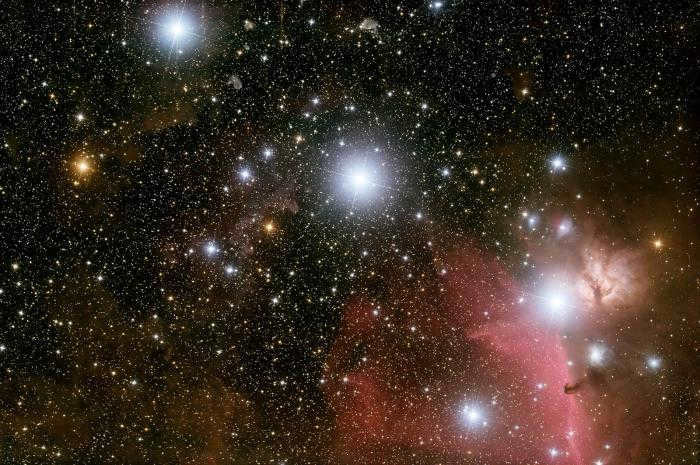
The concept of constellations, as we know them today, originated in ancient Greece hundreds of years ago. During that time, the visible sky was divided into different sections based on groups of stars. These sections were given names based on the shapes they formed, making it easier for people to navigate through space. The Greeks referred to the spaces between the constellations as “empty spaces,” although they still contained stars that were not part of any specific group. For example, they would refer to these stars as “the area between the Swan and Lyra.”
Contemporary Concept
In the past, any group of stars was referred to as constellations, but in today’s world, this definition has become more specific. Now, constellations are defined as large sections of the sky that contain multiple bright stars visible to the naked eye. These sections are often arranged in recognizable patterns that are easy to remember.
It is also important to note that constellations refer to the areas of the sky that do not overlap or leave empty spaces. These areas have well-defined boundaries. Therefore, it is essential not to confuse a simple group of stars with constellations.
Currently, the celestial sphere is divided into 88 constellations, and their names and boundaries were established at the first congress of the International Astronomical Union in 1922.
What is the origin of names?
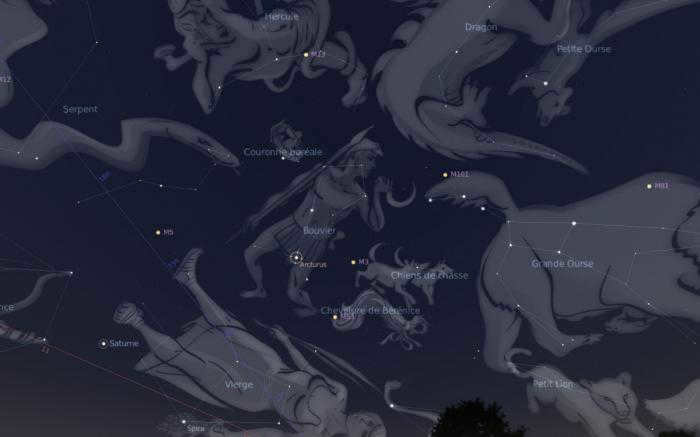
As you may be aware, constellations receive their names in tribute to mythological figures from ancient Greece, animals, and even objects that they bear a resemblance to. For instance, within the expanse of the night sky, we find such legendary characters as Pegasus, Cepheus, Perseus, Cassiopeia, Andromeda, and others. All of these are intertwined with the rich mythology of ancient Greece, which holds an abundance of captivating tales.
Moreover, the celestial sphere at night also unveils the presence of the Eagle, Dolphin, Dove, Lion, Fox, Peacock, and numerous other animals.
Additionally, there are constellations that derive their names from objects they resemble, including the Pump, Microscope, Stove, Grid, Arrow, Circle, Bowl, Clock, and more.
As we can observe, there exists an extensive catalog of names bestowed upon these celestial luminaries.
What is the origin of the name of the Big Dipper constellation?
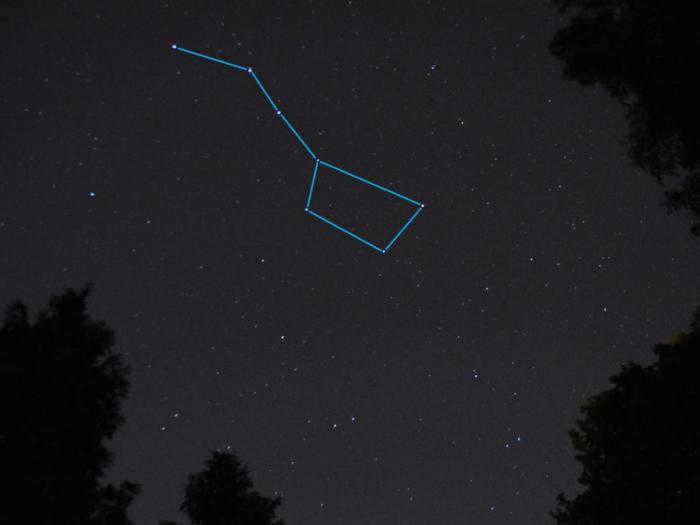
Since childhood, we have always been fascinated by everything related to celestial bodies. Have you ever wondered why certain stars have specific names? For example, why was the Big Dipper named after a bucket? And who is responsible for naming constellations?
Interestingly, the constellation Big Bear doesn’t actually resemble a bear at all, especially when you look at the seven bright stars that make it up. So why was it given this name? Perhaps it was someone’s creative imagination at play, and the true meaning is only clear to those with a vivid imagination?
Let’s delve into this question and try to find some answers.
As we are aware, constellations were once referred to as clusters of stars. They were named based on the shape they formed. Ancient atlases of stars, created by artists and designers, attempted to align the contour of the animal with the outline in the sky, often depicting the bear with a lengthy tail. This was done to help those with less imaginative minds “see” this specific animal in the sky and not another.
The ancient Greeks named the constellation “Big Dipper,” which in Greek translates to “arktos megale.” Thus, the name Arctic originated.
Legend has it that Zeus was captured by King Lakion’s daughter, who was hunting with the goddess Artemis. The daughter seduced Zeus and became pregnant. When Artemis saw her bathing, she transformed the girl into a bear. The girl, now in the form of an animal, gave birth to a son named Arkadus and lived among humans. However, one day, hunters led by Arkadus attacked the bear and tried to kill her. In a moment of remembrance, Zeus saved her by placing her in the sky among the constellations. He quickly lifted the bear by her tail, causing it to stretch and become long.
The world is like a puzzle waiting to be solved, but who has the ability to put it all together?
Wednesday, July 22, 2015.
The origin of constellation names

When we look up at the night sky, it may seem like the stars are randomly scattered across the vast expanse, with no rhyme or reason. However, astronomers have a method to this apparent chaos. They have grouped the stars into constellations and assigned them names based on their observations and interpretations. So, how did they decide which stars belonged together and what to call them? Let’s delve into the fascinating world of astronomy to find out.
Little Lions and big Hydras

The stars visible from Earth may be separated by millions of light years, but to us, they appear as if they are closely packed together and arranged in specific shapes such as crosses, crowns, or triangles. The identification of the first constellations dates back to about five thousand years ago. It all started when people noticed that the night sky was not randomly filled with sparkling dots, but rather, the same stars with familiar shapes would appear every night from behind the horizon. However, it is important to note that the constellations we are familiar with today differ greatly from how they were originally envisioned by ancient civilizations.
In the Ancient World and Middle Ages, individuals simply distinguished groups of the most radiant stars. It frequently occurred that the faint and inconspicuous stars were not included in any constellations.
It was only in the XVI-XVII century that they were incorporated into star atlases. Even ancient stargazers mentioned a few stars above the brilliant constellation of Leo, but it was only in 1690 that the astronomer Jan Hevelius gave them a name and referred to them as “Little Leo”. In 1922, at the First Assembly of the International Astronomical Union, the sky was divided into 88 sectors, corresponding to the number of recognized constellations. Out of these, about fifty were known to the ancient Greeks, and the names of the remaining ones appeared later, when the stars of the Southern Hemisphere were discovered.

Contemporary constellations do not consist of lions and unicorns: the sky has been divided into conventional regions, with precise boundaries separating them; the brightest stars are identified by Greek letters (Alpha, Beta, Gamma…). The largest constellation in terms of area is Hydra; it covers 3.16 percent of the sky; the smallest is the Southern Cross.
There are also “unofficial” constellations – bright stars within other constellations that have their own names (sometimes referred to as “asterisms”) – for instance, Orion’s Belt within the Orion constellation or the Northern Cross in the Swan constellation.

If an ancient astronomer were to examine a modern constellation map, it would likely be very confusing to them.
For instance, the prominent star Sirius in the Dog constellation has shifted its position by four moon diameters, while the star Arcturus in the Magpies constellation has moved even further, by eight moon diameters. In fact, many stars have even moved to different constellations altogether. Constellations are simply arbitrary groupings of stars that happen to be visible in the same part of the sky from Earth. They consist of stars from various regions of space, at different distances from Earth, and with different levels of brightness. The only thing that connects the stars within a constellation is their apparent proximity to each other in our view from Earth.

In 1952, H.A. Ray, an American author of children’s books and a hobbyist astronomer, devised fresh designs for constellations. He proposed connecting the most prominent stars with lines to create simple shapes that corresponded to the name of the constellation. While some of Ray’s concepts may appear peculiar or amusing (for instance, why was the brightest star, Spica, in the lower back of the Virgo constellation?), remembering and identifying a girl in a short skirt is more straightforward than trying to visualize a mere collection of lines in the sky.
Ancient Hunting: A Glimpse into the Past

What individuals observe in the atmosphere has a direct correlation to their material culture. For instance, numerous cultures perceive the Big Dipper as representing hunters and prey. Within this constellation, adjacent to the star Mizar, there exists a minuscule star referred to as Alcor. Various tribes of North American Indians and Siberian peoples believed that Alcor served as a pot for cooking meat.
The Iroquois legend tells of a day when six hunters embarked on a bear hunt. One of the hunters feigned illness, while the others carried him on a stretcher; a man carrying a cauldron followed closely behind. When the weary hunters spotted the bear, the cunning man leaped off the stretcher and was the first to capture the beast. They all eventually ascended into the sky; hence why the leaves turn red in the autumn – the bear’s blood drips onto the foliage from the heavens.
The Khanty, Ket, and Evenks are familiar with similar stories in Siberia. Among the Mohawk Indians, the ladle of the Big Dipper is believed to represent a bear, while the stars in the “handle” of the ladle are seen as hunters accompanied by a dog named Alcor. Alcor is also considered to be a dog or a wolf by other cultures such as the Ukrainians, Estonians, and Basques.
In ancient Greek mythology, the Big and Little Bears, known as Helica and Kinosura, were said to be bears who provided milk to the god Zeus. Another version of the story states that the Big Dipper was once a woman named Callisto, who was loved by Zeus. However, Zeus transformed her into a bear and brought her to the heavens.
Orion, the stooped hunter, wields a formidable sword

The constellation known as Orion’s belt consists of three bright stars that are easily visible in the night sky. This constellation, which is recognized by people all over the world, not only includes the belt, but also features Orion’s sword, shield, and club.
In Greek mythology, Orion was depicted as a hunter who guarded the seven Pleiades sisters, who were the daughters of Atlas, a titan, and Pleione, a nymph. Orion boasted that he could defeat any beast on Earth, which alarmed Mother Earth. In response, she sent a scorpion to sting Orion, ultimately causing his demise. The figures of Orion, the Scorpion, and the Pleiades were immortalized in the form of constellations in the night sky.
The Australians held the belief that Orion was an elderly man who pursued the seven sisters and drowned them after they rejected his advances. On the contrary, the Chukchi people believed that Orion’s belt represented his back. As it turns out, Orion was married, and his wife disapproved of his harassment of the Pleiades. In response, she struck Orion on the back with a board, resulting in him becoming hunchbacked. The Pleiades rejected the hunchbacked Orion’s advances. He attempted to kill them, but his efforts were in vain, with the star Aldebaran serving as his failed arrow. Interestingly, both the Chukchi people and the Sahara peoples share the belief that Orion’s sword is not a sword at all, but rather a part of the body of the amorous hunter.
In addition to Scorpio, Orion is responsible for the presence of other constellations such as the Hunting Dog (comprised of the Big and Little Dog constellations) and the Hare. Aratus wrote, “Below both feet of Orion rotates Hare, day and night chased.”
“Circle of Animals.”

The 12 constellations that lie along the path followed by the Sun, Moon, and planets are widely recognized as the most famous constellations. This celestial pathway is known as the zodiac, a term derived from the Greek words meaning “animal circle.”
The zodiac that we are familiar with today, known as the Greco-Roman zodiac, originated from ancient Babylonia. However, in ancient times, it had some variations: Libra was not included (instead, this group of stars was considered the claws of Scorpio) and the zodiac circle began with Cancer instead of Aries. Cancer was associated with the summer solstice.
The ancient Sumerians referred to Aries as the “Hired Man” or “Batrak”. This agricultural worker eventually became associated with the shepherd deity Dumuzi, leading to the representation of a ram-Aries. The Greeks believed that this ram possessed a magical hide known as the golden fleece. When it comes to Taurus, both the Sumerians and Greeks only saw half of a bull in the celestial sphere. According to legend, the Sumerian hero Gilgamesh spurned the love of the goddess Inanna, prompting her to release the monstrous bull Gugalanna upon him. Gilgamesh and his companion Enkidu successfully defeated the bull, with Enkidu removing its hind legs. This explains why only the front portion of the bull is visible in the night sky.

Gemini, one of the constellations in the night sky, features two prominent stars that have been associated with the concept of twins. In Greek mythology, these stars were known as Castor and Polydevec (also known as Pollux in Latin). According to the ancient Greeks, Castor and Polydevec were the twin brothers of Helen of Troy and were born to Leda. Interestingly, their parentage differed, with Polydevec being the son of Zeus, the king of the gods, and Castor being the son of a mortal. When Castor passed away, Polydevec pleaded with Zeus to bring his brother back from the realm of the dead and bestow him with immortality. In ancient Mesopotamia, these celestial twins were referred to as Lugalgir, which means “the Great King,” and Meslamtaea, which means “the One who returned from the underworld.” They were sometimes associated with the moon god Sinus and the god of the underworld Nergal.

The Greeks believed that the constellation Cancer represented the monstrous crab that attacked Heracles, while in Babylon it was known as the Crab, and the ancient Egyptians referred to it as the sacred scarab. Within the constellation Leo, the Babylonians identified the Breast, the Thigh, and even the Hind Paw (now known as the star Zaviyava, or Beta Virgo). In Greek mythology, it was the Nemean lion that Heracles famously defeated.
The Celestial Maiden was associated with Rhea, the consort of Cronus (Saturn), or the goddess Astrea, the protector of good and truth. In ancient Mesopotamia, Virgo was referred to as Borozda.
The goddess Shala was the patroness of this constellation and was often depicted holding an ear of barley in her hand. The star now known as Gamma Virgo was called Barley Spike by the Babylonians. The ancient Greeks were not familiar with the constellation of Libra, but it was recognized by the Babylonians. In Mesopotamia, Libra was associated with justice and was referred to as “Judgment”.

In Mesopotamia, Scorpio was revered and feared as the killer of Orion. The Babylonians identified various parts of Scorpio including its Tail, Sting, Head, Chest, and even its Navel. On the other hand, the Greeks saw a centaur in the Sagittarius constellation, while the Sumerians referred to Sagittarius as Pabilsag, meaning “Priest” or “Elder”. Pabilsag was considered one of the oldest Sumerian gods and was depicted by the Assyrians as a winged centaur with two heads – one of a man and the other of a lion, along with two tails – one of a horse and the other of a scorpion.

The ancient Greeks believed that Capricorn was represented by the gentle goat Amalthea, who nourished Zeus with her milk. In ancient times, the constellation Aquarius was associated with the Great Flood and the hero Deucalion, who survived the disaster. In Sumerian mythology, Aquarius was known as Gula, the god of rivers, also referred to as “Giant”. In another myth, he was called Lahmu, which means “Hairy”. He was often depicted as a naked, hairy giant, with water flowing from his shoulders, filled with fish.

In Greek mythology, fish were often depicted as two fish bound together with a rope. Legend has it that the goddess of love, Aphrodite, and her son Eros were once being chased by the terrifying monster Typhon. To escape, Aphrodite and Eros leaped into a river and transformed into fish, ensuring their safety by tying themselves together with a rope. In Mesopotamian mythology, it was believed that one of the fish in this constellation was capable of flying and was known as the “Swallow-Fish,” while the other fish represented the goddess of war, Anunitu.
The theft of the goose from the chanterelle

During the period of exploration, European explorers were the first to observe the night sky in the southern hemisphere. Pieter Keyser, a navigator aboard the ship of Dutch merchant de Houtman, had the opportunity to see and name twelve new constellations while sailing around the Cape of Good Hope in 1595-1596. These constellations included the Crane, the Goldfish, the Fly, the Peacock, the Southern Triangle, and others. In addition to the southern hemisphere, several new constellations were also discovered in the northern hemisphere, such as the Fox and Goose, the Lizard, and the Lynx. However, not all of these constellations were officially recognized, for example, the constellation Foxy became known simply as Foxy (although the brightest star in Foxy is still referred to as Goose).

During the middle of the 18th century, a Frenchman named Nicola Louis de Lacaille documented an additional seventeen constellations in the southern hemisphere. He selected names primarily from the fields of science and art, such as Telescope, Circulus, Painter’s Easel, and Chemical Furnace. Lacaille also divided the extensive constellation known as the “Ship of Argo,” which Greek sailors could observe just above the horizon, into three parts: Keel, Stern, and Sails. Additionally, he named another constellation Table Mountain, in honor of the mountain located on the Cape Peninsula in South Africa, where he conducted his astronomical observations.
Before Europeans arrived, the people of the southern hemisphere had their own unique names for constellations. In Polynesia, they referred to the constellation of the Great Bird as Manuk, with Sirius being seen as its head or body. Canopus and Procyon were considered its wings. The Southern Cross, on the other hand, was known as the spinor fish or Bubu. The Magellanic clouds, which Europeans discovered in the 15th and 16th centuries, were already well-known in Polynesia. In Tonga, they were called Ma’afu lele, meaning “Flying Fire,” and Ma’afu toka, meaning “Standing Fire.” In Fiji, they were referred to as Matadravu ni sautu, which translates to “Hearth of Peace and Abundance.”
Faithful celebrities

During the seventeenth and eighteenth centuries, scientists came up with numerous names to honor monarchs. In 1679, Edmund Halley discovered a star in the constellation Argo Navis and named it “Charles’s Oak” after King Charles II, who famously hid in an oak tree during his youth to escape Cromwell’s soldiers. Another English king, George III, had a star in the constellation Eridanus named “George’s Harp” in his honor. The Prussian astronomer G. Kirch also named a star in Eridanus the “Brandenburg Sceptre”, and he named the swords in the constellation Kurfürst of Saxony. These names were meant to flatter and pay tribute to the crowned personages.
To honor the memory of King Frederick the Great of Prussia, the astronomer I. Bode chose to name a constellation after him, known as “Frederick’s Regalia” or “Frederick’s Glory”. This decision was made with great enthusiasm, almost causing him to injure his hand while attempting to separate the stars from the constellation Andromeda for this purpose.
Occasionally, even lesser-known figures were recognized in the heavens. For instance, in 1799, the French astronomer Lalande proposed the inclusion of a constellation representing cats: “I have a deep affection for cats, and I hold them in high regard. After dedicating sixty years of my life to the study of astronomy, I believe it is only fitting to immortalize one of these creatures in the night sky.” Unfortunately, the Cat constellation, along with the Lone Thrush, the Reindeer, and the Turtle, did not make the cut and were not included in the modern list of constellations.
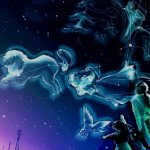
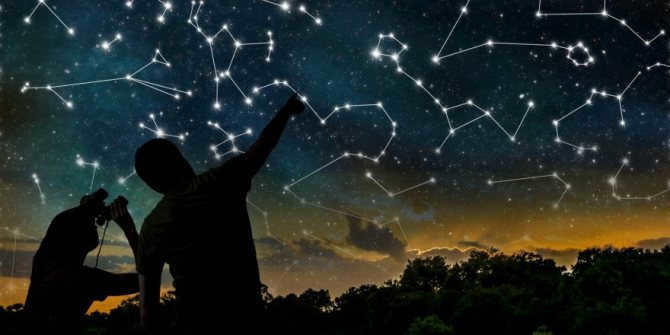
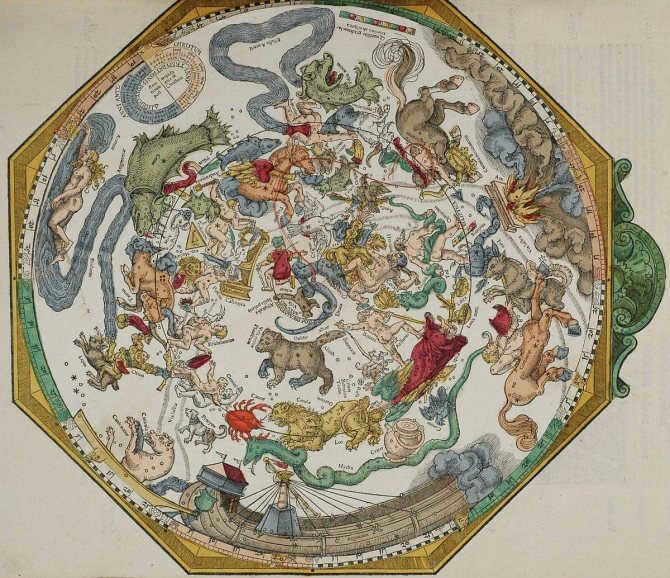
The history of constellations is incredibly diverse. Primarily, it dates back to ancient times. From the earliest days, our ancestors, while gazing at the heavens, identified distinct segments within it. It was these individuals who bestowed names upon the constellations. Additionally, many names are intertwined with the beliefs of ancient civilizations.
Not many of us have had the opportunity to witness the beauty of the stars like the people from ancient times did, as our cities are filled with too much light.
Neil Gaiman. Stardust
Furthermore, there exist numerous theories regarding the origin of each celestial section. These variations likely stem from the diverse worldviews of different civilizations and their geographical affiliations. After all, every nation, country, and state had their own set of deities, legends, and protectors, which is probably why the star formations were named in their honor.
Naturally, the bright and prominent regions of the sky could not go unnoticed by people. Throughout history, these areas have been primarily used for navigation purposes. Hence, it can be said that they are not merely painted on the celestial sphere, but also serve as a helpful guide in human life.
- Since ancient times, different nations have recognized the existence of constellations and assigned them unique names. Currently, there are officially 88 constellations, and this list was finalized in 1930. Forty-eight of these constellations were already known during the time of Ptolemy, who lived in the 2nd century AD.
- The constellations were named based on the figures that could be seen among the stars. Often, these figures were representations of ancient Greek heroes or mythical creatures such as the Lion, Dragon, Hercules, Andromeda, Perseus, and many others. Some constellations were named after the shape of objects if they had a distinct appearance, such as the Northern Crown or the Southern Cross.
- Out of the 88 constellations, only 58 have a brightest star, known as alpha, which also has its own name. The remaining constellations have an alpha star that is too faint to be named.
- The constellation with the largest area in the sky is Hydra, covering a vast expanse of 1303 square degrees. On the other hand, the Southern Cross is the smallest constellation, occupying just 68 square degrees.
- One of the most well-known constellations is the Big Dipper, which stands out due to its distinctive shape created by a group of fairly bright stars. It is only slightly smaller than Hydra, encompassing an area of 1,280 square degrees.
- Several constellations offer a plethora of fascinating celestial objects to observe with the naked eye, binoculars, or an amateur telescope. These include star clusters, variable and double stars, galaxies, and nebulae. However, there are also constellations that lack any noteworthy features for amateur astronomers.

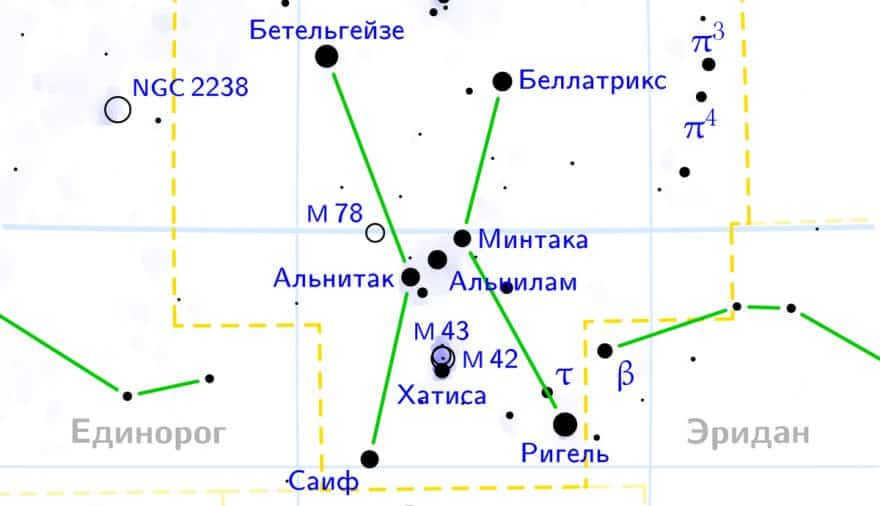



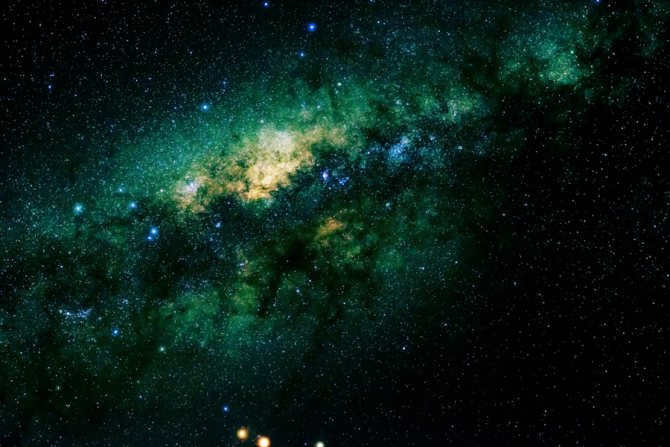
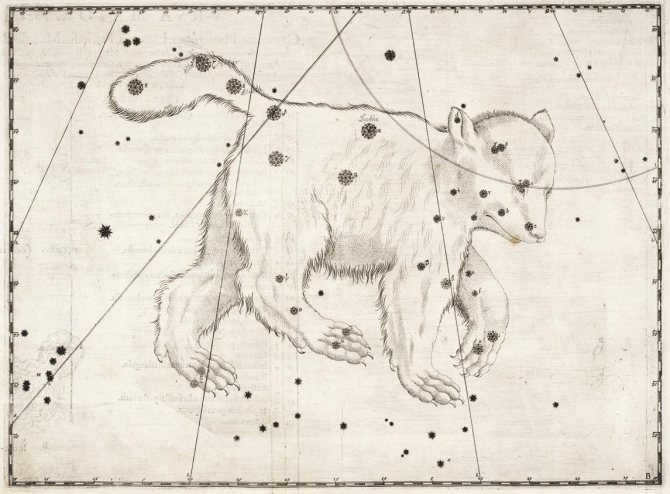
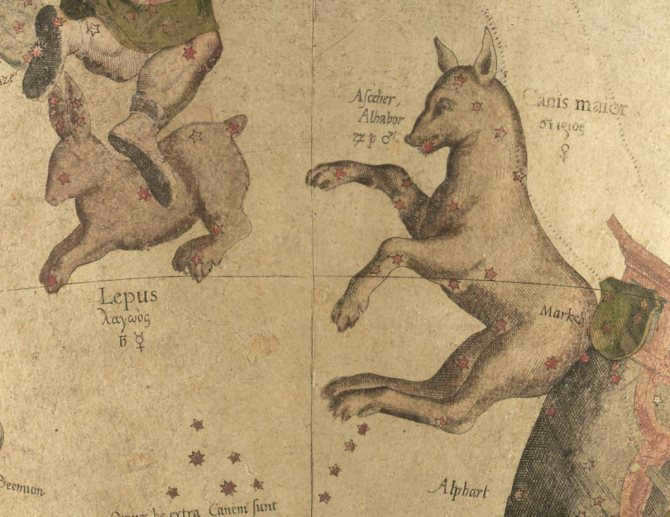
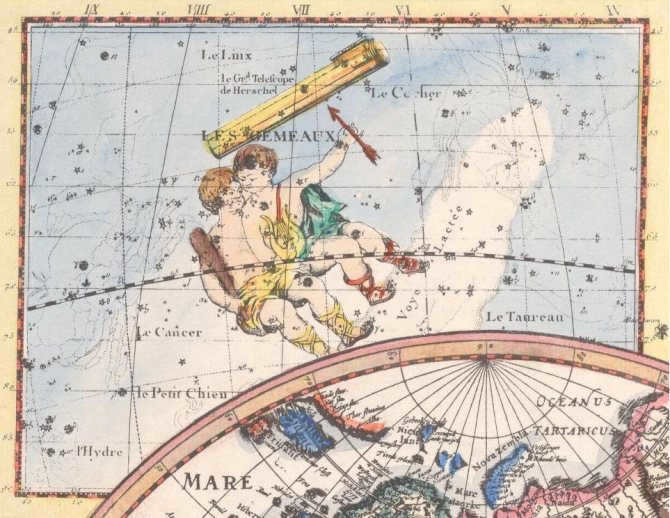
There is a vast expanse of stars in the sky, and to avoid getting lost in it, it is important to become acquainted with the constellations themselves. There are numerous star charts and atlases available for this purpose. One such chart, which is suitable for naked-eye observation and can be used with binoculars, can be printed out and taken outdoors.
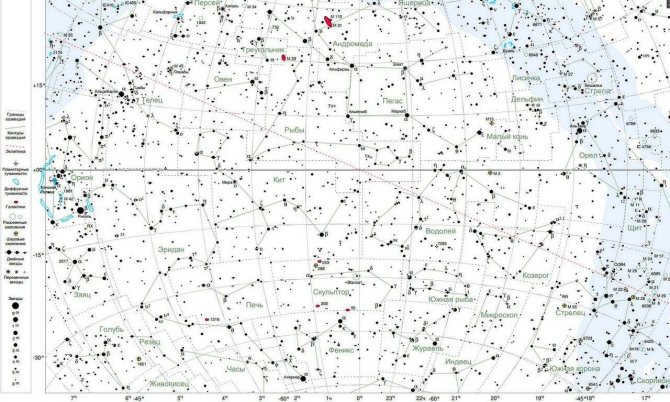
An excellent tool for observing constellations in the night sky is the virtual planetarium Stellarium. This software, available for Windows computers, is widely recognized as the most popular astronomy program. It provides a detailed representation of the night sky for any given location and time. Stellarium not only displays the positions of constellations, but also the Moon, planets, comets, and more. Additionally, there is a version of Stellarium available for Android smartphones and tablets.
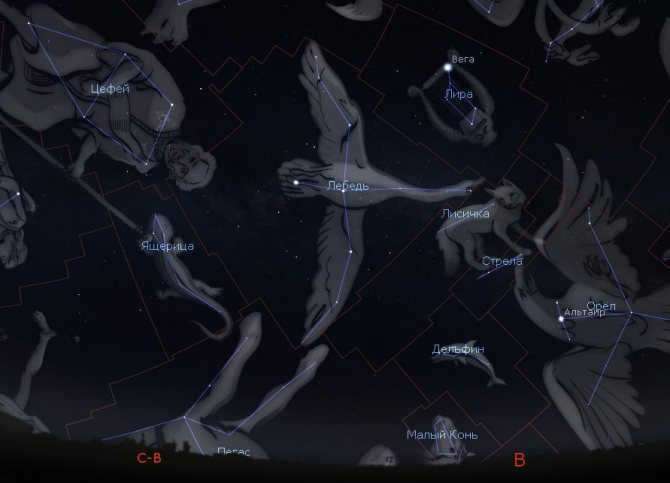
The names of constellations were obtained in what manner?
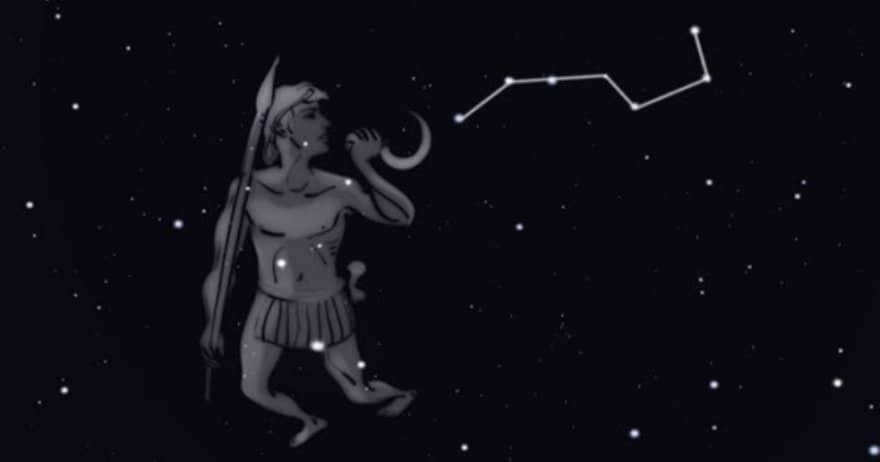
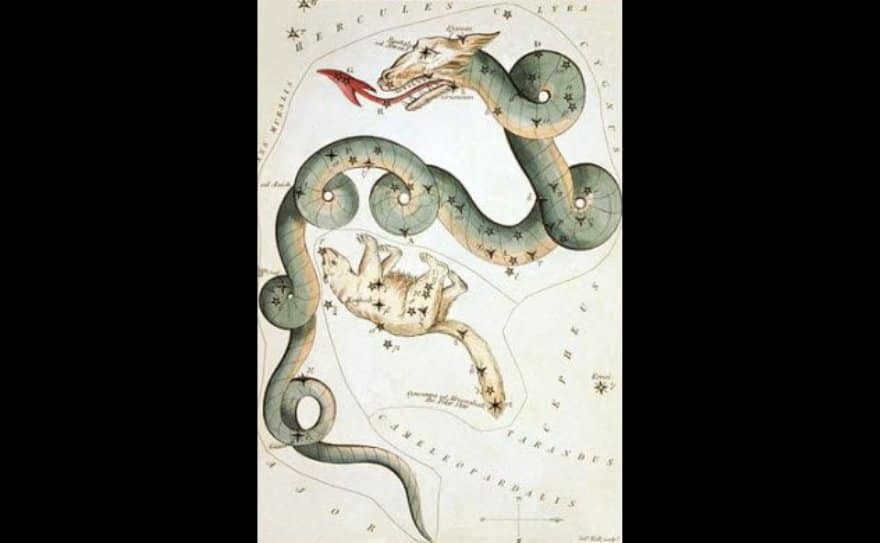
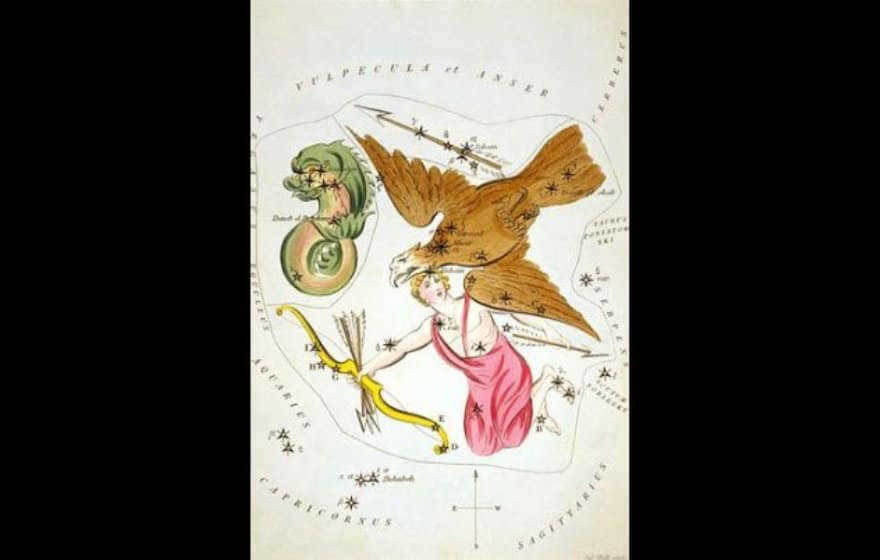
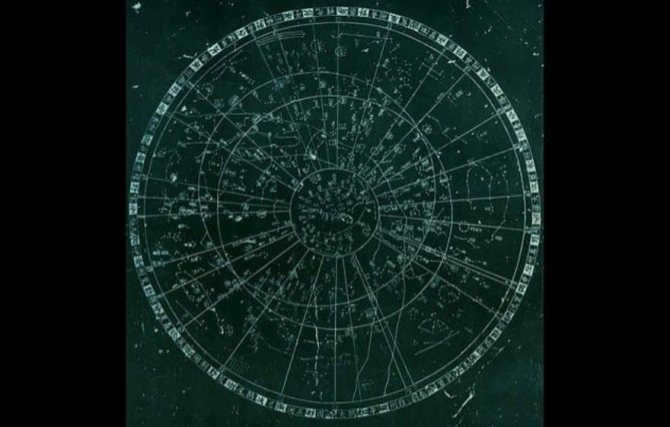
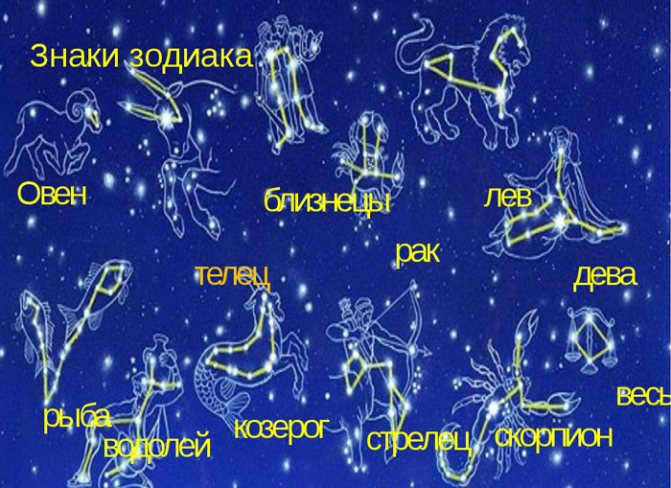
What makes asterisms different from constellations
Asterisms are distinctive patterns that can be seen in the night sky and are useful for locating different celestial objects. They are formed by connecting stars with imaginary lines, and these stars can belong to one or multiple constellations. In other words, an asterism can be a component of a constellation.
One well-known example of an asterism is the Great Summer Triangle, which is made up of the bright stars Vega, Deneb, and Altair – the alpha stars of the constellations Lyra, Cygnus, and Aquila, respectively. These three prominent stars in the summer sky create an almost equilateral triangle that is easily recognizable.
Another famous asterism is the Big Bucket, which is part of the constellation Ursa Major (also known as the Big Dipper). While the constellation itself is much larger, the Big Bucket is a distinct and recognizable portion that resembles an actual bucket.
An asterism known as the “W” in the constellation Cassiopeia is quite famous and instantly recognizable to many people, as it resembles the letter “W”. However, this is just one small part of the entire constellation.
Another well-known asterism is Orion’s belt, which is made up of three stars arranged in a straight line.
In reality, there are numerous asterisms in the night sky. They create simple shapes that are easy to remember and help in locating different celestial objects or constellations. For instance, the Summer Triangle can be spotted easily, with its three main stars representing three different constellations. Similarly, Polaris, also known as the North Star, can be easily located by following the handle of the Big Dipper.
An asterism can either be a part of a single constellation or consist of stars from various constellations. In fact, the shapes of constellations are often formed by these asterisms.
Transient celestial events
Which items were excluded from the compilation?
To start with, bolides. Bolides are extremely luminous meteors or, as they are commonly known, “shooting stars.” Unlike man-made satellites, bolides are infrequently observed and last only a few seconds. They also tend to move rapidly across the sky.

The Chelyabinsk meteorite. Source: Wikipedia
Meteors can shine as brightly as Jupiter, but bolides are even more luminous. The largest and therefore brightest bolides are much brighter than the full Moon! They do not completely disintegrate in the Earth’s atmosphere and instead make it to the surface, becoming meteorites.
An example of a very bright bolide that was observed in the sky is the well-known Chelyabinsk meteorite, which fell in February 2013.
Comets have the potential to shine so brightly that they can even rival the Moon! A prime example of such a comet is the near-solar comet Ikea-Seki, which was observed back in 1965. However, the most brilliant comets can only be seen during the morning or evening twilight, when they are set against the backdrop of a bright sky. Moreover, comets are diffuse entities, meaning that their overall brightness is spread out over a large area of the sky, resulting in a diminished impression of their brightness. Yet, nothing can truly compare to the stunning beauty of a comet’s tail!
Another category of intensely bright celestial objects are supernovae. There have been historical supernovae that outshined Venus and were easily visible even in daylight!
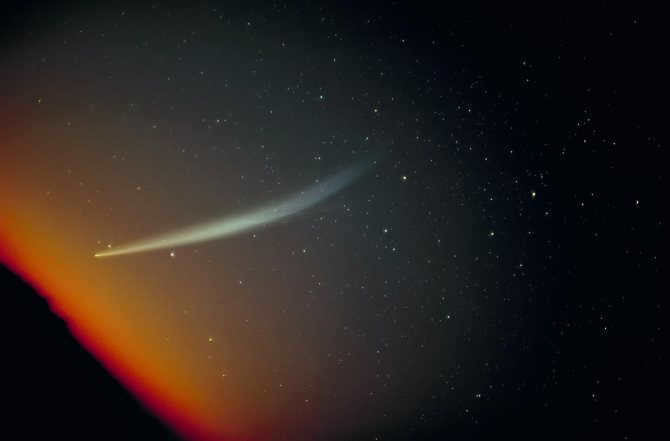
Comet Ikea-Seki. Photo: Wikipedia/Roger Lynds
In brief, the likelihood of witnessing a supernova explosion is exceedingly low. However, there is still a possibility: for instance, Betelgeuse from the Orion constellation has the potential to transform into such a star. Astronomers have identified other potential candidates.
Winter, spring, summer, and fall constellations
Throughout the year, as the Earth completes its orbit, different constellations become visible in the night sky. If we had nighttime all day and night, we would be able to observe all the constellations during the day as well. However, since we also have daytime, the night sky gradually changes its appearance.
Constellations can be categorized as winter, spring, summer, or fall constellations, depending on when they are most visible. For instance, Orion is a classic winter constellation. It rises in the east during late fall, reaches its peak visibility in mid-winter, and sets in the west during spring.
Polar constellations, on the other hand, are always visible throughout the year. These constellations are located near the poles, and the only thing that changes is their altitude above the horizon.
International Space Station
The International Space Station (also known as the ISS) is the largest human-made object in space. It orbits the Earth 18 times a day, which means it can be seen from almost anywhere on our planet.
At first glance, the ISS can easily be mistaken for a fast-moving airplane. Many websites, including NASA’s, provide the exact times when the station will be visible in the sky above your city. They also give information about the station’s precise location and brightness in the sky. Of course, the station’s position and brightness will vary depending on your observer location. The farther away you are, the dimmer it will appear. However, under ideal conditions, the ISS can actually be brighter than Venus!

In the summer of 2020, the Stockholm sky was graced by the presence of the International Space Station. This captivating photo, captured by Peter Rosén, showcases the ISS as it crosses the sky.
Compared to celestial bodies like the Moon or Venus, the ISS is relatively small, with linear dimensions of approximately 100 meters. However, what sets it apart is its proximity to us. When observed through a telescope, the elongated shape of the ISS resembles that of a rice grain.
What is the total number of constellations in the sky?
In 1930, the International Astronomical Union officially established a list of 88 constellations, with 13 of them being zodiacal constellations. This is the current list that is recognized. The boundaries of each constellation were determined by Belgian astronomer Eugene Depport. There are currently no plans to modify this list.
However, in the past, different nations had their own myths and legends, resulting in different constellations. Astronomers have also made attempts to create their own rules, sometimes dividing existing constellations or adding new ones.
In 1799, the renowned French astronomer Jerome de Lalande decided to establish a unique constellation called Cats due to his deep affection for feline creatures. As a token of appreciation for his years of dedicated work, he chose to immortalize a cat in the night sky. This constellation was not only brought into existence near Hydra, but it also endured for a considerable period of time and was even depicted in the atlases of that era. However, in 1930, it was eventually removed from the celestial realm and is no longer visible.
There have been numerous similar tales throughout history. One such account involves Edmond Halley, who attempted to create the constellation Charles’ Oak in honor of the very tree where King Charles II sought refuge when his father’s army faced defeat at the hands of Oliver Cromwell. This celestial formation did exist for a time, coinciding with the presence of the Argo Ship, until it eventually dissipated and the Oak became a part of a different area of the sky.
The Serpentine’s Curse
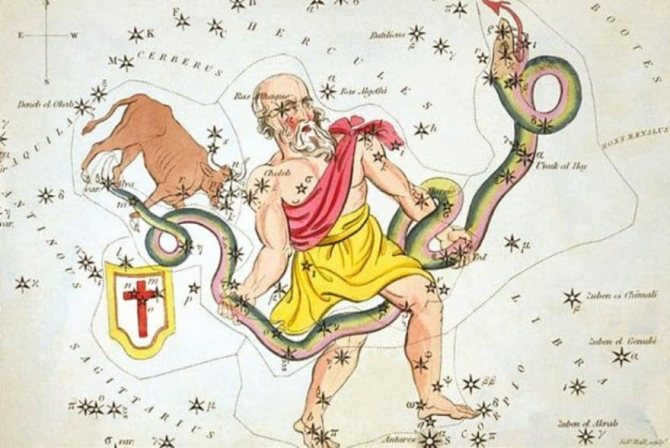
Within the celestial realm, the constellation known as Serpentine gracefully traces its path along the elliptical orbit. This group of stars has long been symbolized as a masculine figure, triumphantly raising a serpent aloft. It is Ras Alhage, a prominent star, that designates the head of this celestial serpent. Notably, within Greek mythology, the renowned healer Asclepius is often associated with this constellation. Asclepius, depicted as a youthful man, met a tragic demise at the hands of Zeus, who feared that he would bestow immortality upon humankind.
Once upon a time, there existed a haunting tale. Erysichthon and his companions proceeded to fell the mighty forest of Demeter, and eventually erected a dwelling in its place. This action provoked the wrath of the goddess, who then proceeded to inflict a severe famine upon Erysichthon. Despite his constant consumption, he found himself unable to satiate his hunger. In a desperate bid for sustenance, he resorted to devouring everything within the confines of his abode. However, this was not enough, and he ultimately resorted to selling his own offspring into servitude in order to acquire more nourishment. Such was the extremity of his hunger that he eventually resorted to self-cannibalism, tearing off pieces of his own flesh. Upon his demise, he was encircled by a multitude of serpents, serving as a grim reminder of the perilous consequences that await those who dare to incur the displeasure of a deity.
The constellations of the north and south
Due to the spherical shape of the Earth and its slight tilt in orbit, certain constellations can be seen in the northern hemisphere while others can be seen in the southern hemisphere. Only a few constellations, located near the celestial equator, can rise above the horizon in both hemispheres during specific times of the year.
Most constellations that can be seen in the middle latitudes of the northern hemisphere are not visible in the southern hemisphere. These constellations are known as northern constellations. On the other hand, many southern constellations cannot be seen in the northern hemisphere. This is particularly true for the polar constellations.
Out of the 88 constellations, only 36 are located in the northern hemisphere, while the remaining 52 are found in the southern hemisphere. However, it should be noted that certain constellations can be observed in both hemispheres, although they may not be positioned high above the horizon. For example, the Big Dog constellation, which includes the brilliant star Sirius, is primarily associated with the southern hemisphere, but it can be easily seen in the middle latitudes of the northern hemisphere during winter. Additionally, the Hydra, Unicorn, Whale, and a few other constellations are also partially or fully visible.
The biggest pulsar
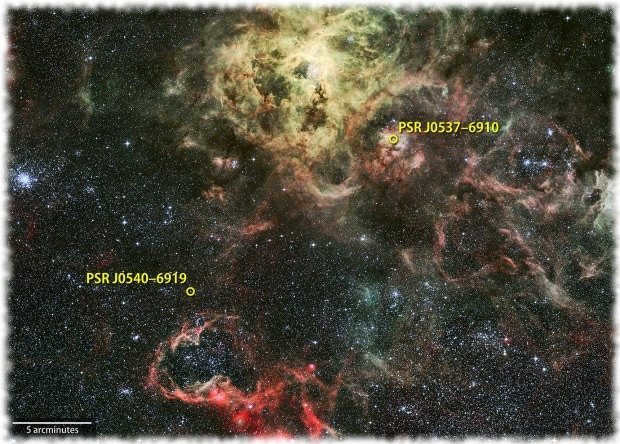
The Tarantula Nebula in the Large Magellanic Cloud is home to a collection of gamma-ray pulsars.
Researchers have recently discovered the largest pulsar within this region, which is a highly luminous pulsating star with an incredibly dense mass. This remarkable finding was made using an advanced gamma-ray telescope positioned 165,000 light-years away from the Milky Way galaxy. The pulsar is the result of a massive star’s explosion, leaving behind a core that has transformed into a powerful neutron star. With a diameter measuring only a few kilometers, the pulsar boasts a mass equivalent to twenty times that of our sun. Its emission of gamma rays is five times more intense than that of the renowned pulsar located in the Crab Nebula. Remarkably, this pulsar rotates at an incredible speed of twenty revolutions per second, emitting the most potent gamma rays ever observed.
Zodiac constellations
The constellations that the Moon and Sun pass through are known as zodiac constellations. In each season, the Sun passes through three zodiac constellations:
- Spring – Pisces, Capricorn, Virgo.
- Summer – Libra, Sagittarius, Scorpio.
- Fall – Leo, Aquarius, Taurus.
- Winter – Gemini, Cancer, Aries.
The constellations where the Sun is currently located become visible six months later when they appear in the evening sky. During daylight, they are not visible, but after six months, they are on the opposite side of the Sun and visible at night.
Astrology assigns unique characteristics to the constellations of the zodiac, although they do not actually exist in reality. Similarly, the planets only appear to move through these zodiacal constellations, forming the foundation for various horoscopes.
Mercury
Mercury, the planet closest to the Sun, can be nearly as luminous as Mars during opposition. However, it can be quite challenging to locate Mercury in the sky. Due to its proximity to the Sun, it can only be observed during the evening or morning twilight in the Russian sky.
Against the relatively bright backdrop of the twilight sky, Mercury does not appear as striking and magnificent as it does against a completely dark background. Nighttime observations of Mercury are only possible in tropical and equatorial regions.
For the most part, the constellations and their bright stars have their origins in ancient Rome, Greece, and the Orient. There are a total of 50 such constellations. The remaining 38 constellations have been given modern names by astronomers in more recent centuries.
The term “constellation” itself is derived from the Latin word constellātiō, which means “set with stars.” It first appeared in the fourth century, but it wasn’t until the fourteenth century that it began to be used in English, specifically in reference to the planets. It wasn’t until the sixteenth century that the definition started to include the stars, as it does today.
When Eudoxus of Cnidus introduced astronomy in Babylon during the fourth century, he identified 48 constellations, which were later reaffirmed by Ptolemy. Of these, 30 constellations had been known since ancient times, with some dating back to the Bronze Age.
Europeans were unaware of the southern constellations until sailors ventured below the equator. It was in the 16th century that Dutch explorers Federico de Houtman and Pieter Dirkszoon Keyser first documented these constellations, which later made their way into Johannes Bayer’s Uranometria catalog published in 1603.
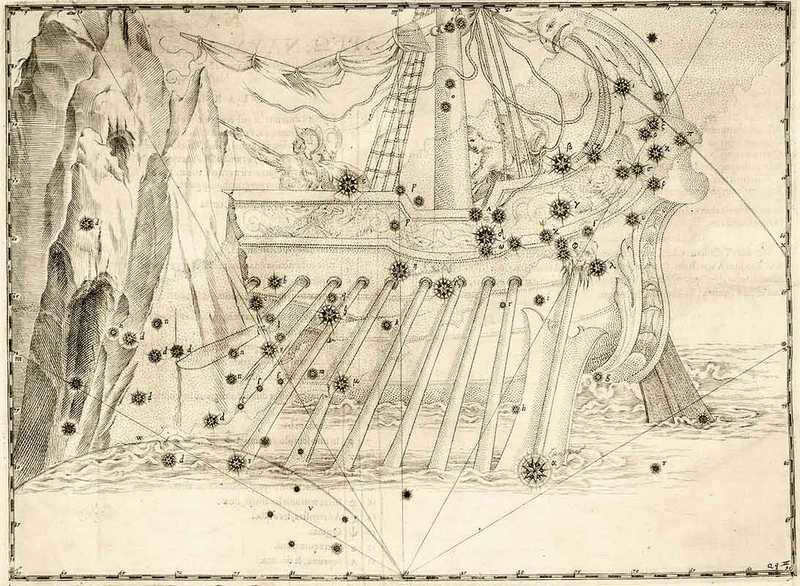
In Bayer’s Uranometria, the constellation known as the “Ship of Argo” was depicted. Bayer also introduced 11 constellations that are still recognized today, including Fly, Toucan, Goldfish, Phoenix, and Indian. He designated 1564 stars with Greek letters based on their brightness, starting with alpha for the brightest and continuing with beta, and so on. These designations are still in use today.
French astronomer Nicolas Louis de Lacaille also contributed to the constellation naming process, introducing constellations such as Octanthus, Pump, Table Mountain, Furnace, and Painter, which are still recognized today. He published his catalog in 1756.
As a result, the names of the constellations have primarily been derived from ancient times, with new additions mainly focusing on the southern constellations. The boundaries of the constellations have also undergone multiple changes throughout history before reaching their current form.
Observation
Studying and observing the constellations is a fascinating activity. Each day, they undergo a slight westward movement, while new constellations emerge in the eastern sky. Over the course of a year, one can witness all the constellations that are visible in a specific hemisphere.
Indeed, knowledge of the constellations is essential for anyone interested in astronomy. It serves as the foundation, akin to the alphabet for reading or numbers for mathematics. Familiarizing oneself with the constellations enables easy navigation and identification of any celestial object of interest. It is also helpful to be acquainted with the brightest stars within these constellations.
To facilitate the study of constellations, maps are necessary. There are various maps available for use, or alternatively, one can utilize the fantastic free program called Stellarium, which can be accessed on your computer or phone.

Constellations are celestial groupings of stars that occupy specific regions in the expanse of the night sky, taking on distinct shapes. Typically, constellations are formed by the most luminous stars that are visible to the unaided eye, although their configurations can sometimes be challenging to discern, with certain constellations appearing amorphous and faint.
For instance, among the most renowned constellations that have gained widespread recognition include the well-known Big and Little Dippers, Orion, and the Swan. The two Bears can be easily located in the night sky due to the dipper-like arrangement formed by the brightest stars within these constellations. Orion bears resemblance to an hourglass shape, with three stars occupying the central portion. The swan takes on the appearance of a colossal cross.
The configurations of the constellations are fictional, serving as aids to better recall and locate them in the celestial sphere. Each individual star exists independently and is not interconnected with the others in any manner. Two stars belonging to the same constellation, seemingly close in the sky, may actually be situated at greatly varying distances from us – one at a distance of a dozen light years, while the other at a thousand.
Consequently, the categorization of stars into constellations is entirely arbitrary, implemented for the sake of simplicity in searching and charting. Just as the water on Earth is conventionally separated into oceans, despite all of them constituting one World Ocean. However, in ancient times, people truly perceived human and animal figures within the patterns of stars and bestowed upon them names. Many of these designations have endured until the present day, and the boundaries of the constellations are defined by these figures.
Curious information regarding constellations
- Constellations have been recognized since ancient times – each civilization observed something unique in the groupings of stars and bestowed upon them a specific name. Currently, there are officially 88 constellations, with their final list being approved in 1930. During the time of Ptolemy in the 2nd century AD, 48 of these constellations were already known.
- The names of the constellations were assigned based on the figures that could be perceived among the stars. Typically, these figures were ancient Greek heroes from myths or animals such as the Lion, Dragon, Hercules, Andromeda, Perseus, and many others. Some constellations were named after the shape of objects if they possessed a distinctive appearance, such as the Northern Crown and the Southern Cross.
- Out of all the constellations, only 58 have a brightest star, known as alpha, with its own unique name. The remaining constellations have an alpha star that is so faint that it does not possess a name.
- Hydra is the largest constellation in the sky, covering a vast area of 1303 square degrees. On the other hand, the Southern Cross is the smallest constellation, occupying only 68 square degrees.
- One of the most well-known constellations is the Big Dipper, renowned for its distinctive shape formed by several bright stars. It is slightly smaller than Hydra, covering 1,280 square degrees.
- Several constellations offer a multitude of fascinating objects to observe, whether with the naked eye, binoculars, or an amateur telescope. These include star clusters, variable and double stars, galaxies, and nebulae. However, there are also constellations that lack any remarkable features for amateur astronomers.
Star Maps and Constellation Charts
When it comes to navigating the expansive starry sky, it’s important to have a solid understanding of the constellations. Fortunately, there are numerous resources available to help with this. Among them are a variety of star charts and atlases specifically designed for this purpose. One such chart, which is perfect for observing with just the naked eye or binoculars, can be easily downloaded here. Simply print it out and you’ll have a convenient reference to take with you on your outdoor stargazing adventures.

The Stellarium virtual planetarium is a highly effective tool for observing constellations in the night sky. It is widely regarded as the most popular astronomy software for Windows computers. It provides a visual representation of the sky from a specific location and time, allowing users to identify constellations, as well as the positions of the Moon, planets, comets, and more. Additionally, there is a version available for Android smartphones and tablets.

Constellations within the Stellarium software.
The Distinctions Between Asterisms and Constellations
Asterisms are distinct patterns in the sky that aid in locating various celestial objects. They are comprised of imaginary lines connecting well-spaced stars, which may belong to the same or different constellations. In other words, an asterism can be part of a larger constellation.
For instance, one of the most well-known asterisms is the Great Summer Triangle, which is formed by the prominent stars Vega, Deneb, and Altair – the alphas of Lyra, Cygnus, and Aquila, respectively. These three brilliant stars in the summer sky create an almost isosceles triangle that is easily visible.
The asterism known as the “W” of the constellation Cassiopeia is equally well-known – it has been observed and likened to the letter itself by everyone. However, this asterism is only a small part of the entire constellation.
Another widely recognized asterism is Orion’s belt, which consists of three stars arranged in a straight line.
Indeed, there are numerous asterisms scattered across the night sky. They take on simple shapes that are easy to remember, aiding in the identification of various celestial objects or constellations. For instance, the Summer Triangle can be quickly located, with its vertices marking the prominent stars of three separate constellations. Similarly, Polaris can be easily found by following the handle of the Big Dipper.
An asterism can either be a component of a single constellation or comprise stars from different constellations. The shapes of constellations themselves are often derived from asterisms.
Winter, Spring, Summer, and Fall Skies: A Guide to Constellations
Throughout the year, as the Earth completes its orbit, the constellations visible in the night sky change. If we had constant darkness, we would be able to observe all the constellations during the day as well. However, since we also have daylight, the night sky presents a shifting panorama.
Constellations can be categorized as winter, spring, summer, or fall based on the best time to view them. For instance, Orion is a classic winter constellation. It emerges in the eastern sky in late fall, reaches its prime visibility during mid-winter, and eventually sets in the west by spring.
There are also polar constellations, which remain visible throughout the year. These constellations are located near the poles, and while their position above the horizon changes, they can be seen at any time.
How many constellations are there in the sky?
The International Astronomical Union established a list of 88 constellations in 1930, with 13 of them belonging to the zodiacal constellations. These are the official constellations that are recognized today. The boundaries of each constellation were defined by the Belgian astronomer Eugene Depport. There are currently no plans to change this list.
However, in the past, different nations had their own mythology and legends, which led to different constellations. Astronomers have also made attempts to create their own rules, sometimes dividing existing constellations and adding new ones.
For instance, there was once a single large constellation known as the Ship of Argo, which was the largest of them all. However, in the 13th century, the French astronomer Lacaille divided it into three separate parts – Korma, Sails Kiel, and also added the Compass. As a result, instead of one constellation, there were now four.
Furthermore, in 1799, another renowned French astronomer named Jerome de Lalande decided to create the Cat constellation simply because he had a fondness for cats. As a reward for his many years of hard work, he felt he could afford to place a cat in the sky. Surprisingly, this constellation was indeed brought into existence near Hydra and existed for a considerable period of time, even being depicted in atlases of that era. However, it was eventually removed in 1930 and is no longer visible in the night sky.
There have been numerous accounts similar to this one. Edmond Halley himself made an attempt at forming the constellation known as Charles’ Oak, as a tribute to the tree under which King Charles II sought refuge following his father’s army’s defeat by Oliver Cromwell. This constellation actually existed for a period of time before the Argo Ship was dismantled, and Oak happened to be located in that particular region of the celestial sphere.
List of all 88 constellations
Here is a current list of all 88 constellations that can be observed in the night sky. The table can be sorted by clicking on the column heading of your choice.
Constellations in the North and South
Due to the Earth’s spherical shape and slight tilt, certain constellations are visible in the northern hemisphere while others can be seen in the southern hemisphere. Some constellations, located near the celestial equator, can be seen above the horizon in both hemispheres at specific times of the year.
Most constellations visible in the middle latitudes of the northern hemisphere are not visible in the southern hemisphere. These are referred to as northern constellations. On the other hand, many southern constellations are never visible in the northern hemisphere. This is especially true for the polar constellations.
That is the reason why individuals in Russia will never have the chance to observe the Southern Cross, Indian, Microscope, and other constellations that are found in the southern hemisphere – to witness these, one must travel south of the equator. Correspondingly, inhabitants of Australia will never be able to see Cassiopeia, Lyra, Swan, and other constellations that are located in the northern hemisphere from their homes.
In total, out of the 88 constellations, only 36 are positioned in the northern hemisphere, while the remaining 52 are situated in the southern hemisphere. However, it is important to note that a few constellations can be observed in both hemispheres, although they do not rise significantly above the horizon. For instance, the Big Dog with its prominent star Sirius, despite belonging to the southern constellations, can be easily seen during winter in the middle latitudes of the northern hemisphere. Similarly, Hydra, Unicorn, Whale, and a few others are also partially or fully visible.
If you closely observe the Moon’s position over the course of a month, you will notice that it gradually moves towards the east and appears in various constellations. The Moon shifts approximately 13 degrees each day, completing a full circle and visiting all 12 constellations in a span of 27 days.
Similar to the Moon, the Sun also follows a similar pattern of movement. However, it takes a year for the Sun to complete a full circle and it shifts by approximately 1 degree each day.
Zodiacal constellations
The constellations that the Moon and the Sun pass through are known as zodiacal constellations. In each season, the Sun passes through three zodiacal constellations:
- Spring – Pisces, Capricorn, Virgo.
- Summer – Libra, Sagittarius, Scorpio.
- Fall – Leo, Aquarius, Taurus.
- Winter – Gemini, Cancer, Aries.
The constellations that the Sun is currently in become visible six months later when they appear in the evening sky. During the daytime, they are not visible due to the sunlight. After six months, they are on the opposite side of the Sun and can be seen at night.
The zodiac constellations in astrology are ascribed with special properties, which obviously do not actually exist. Likewise, the planets only pass through the zodiac constellations, serving as the foundation for various horoscopes.
Origin of constellations
Primarily, the names of constellations and their prominent stars trace back to ancient Rome, Greece, and the Orient. There are 50 such constellations, while the remaining 38 bear modern names that astronomers have devised over the past few centuries.
The term “constellation” itself is derived from the Latin word constellātiō, meaning “set with stars.” It began to be used in the 4th century, although it was not adopted into English until the 14th century and was initially applied to the planets. It was not until the 16th century that the definition began to be applied to the stars as it is today.
During the fourth century, Eudoxus Cnidus introduced astronomy in Babylon, where he initially identified 48 constellations. These constellations were later adopted by Ptolemy. Out of the 48, 30 constellations had been recognized since ancient times, with some dating back to the Bronze Age.
The Greek system of constellations was developed based on the Babylonian astronomical system and has remained largely unchanged to this day. Many of the names we use for constellations today originated during that time.
The southern constellations were not familiar to Europeans until sailors began exploring beyond the equator. It was in the 16th century that Dutch explorers Federico de Houtman and Pieter Dirkszoon Keyser first described these constellations, which were later included in Johannes Bayer’s Uranometria catalog published in 1603.


In Bayer’s Uranometria, the constellation known as the “Ship of Argo” is depicted.
Bayer introduced several constellations that are still recognized today, including Fly, Toucan, Goldfish, Phoenix, and Indian. Additionally, he assigned Greek letters to 1564 stars based on their brightness, with the brightest labeled as alpha, followed by beta, and so on. These designations continue to be used in modern astronomy.
French astronomer Nicolas Louis de Lacaille also included several constellations in his catalog, which are still observed today. These constellations include Octanthus, Pump, Table Mountain, Furnace, and Painter. Lacaille’s catalog was published in 1756.
Thus, the names of the constellations have been passed down to us primarily from ancient times, with new additions mainly coming from the southern hemisphere. Throughout history, their boundaries have undergone numerous changes before reaching their current form.
Observation
Observing and studying the constellations is a fascinating endeavor. Each day, they gradually shift towards the west, while new constellations rise in the east. Over the course of a year, one can witness all the constellations visible in a specific hemisphere.
In fact, astronomy cannot be pursued without a knowledge of the constellations. They serve as the foundation, akin to the alphabet for reading and numbers for mathematics. By familiarizing oneself with the constellations, one can easily locate any object of interest. It is also helpful to be acquainted with the brightest stars within them.





